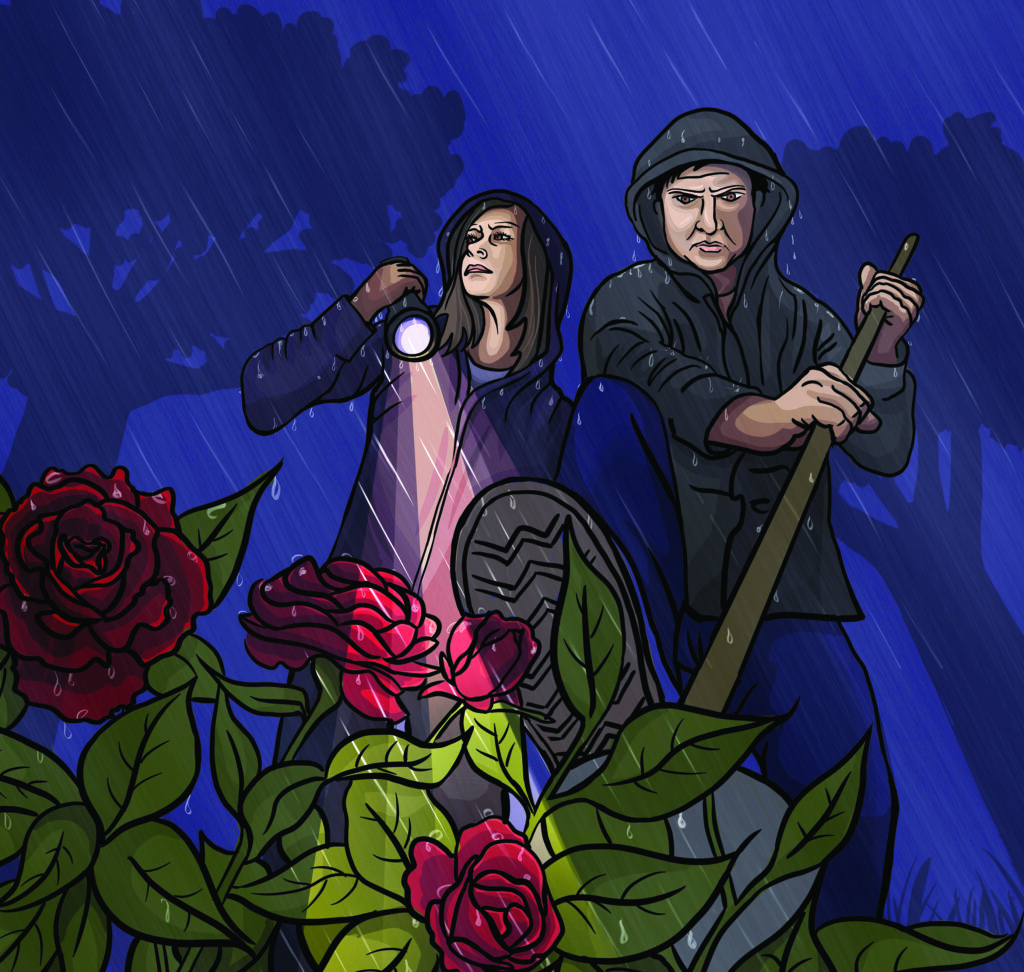The family that steals plants together stays together

At the break of dawn in the middle of a downpour, my dad and sister drive to a house in the center of the city with shovels in hand. Cloaked by the dim light of a drab November day, they jump out of the car and strike fast, unbothered by the torrent of rain falling on them. The legality of this assignment is as murky as the sky, but they remain committed. It is not riches or jewels motivating this early morning heist—it’s plants. My dad inadvertently started a halfway house for endangered flowers, and they’ve come to burglarize this yard of four new prospects: a rose bush, a lilac bush, irises, and lilies of the valley. They belonged to our cousin Harry, who recently passed after a swift illness. Things happened quickly when the family moved, and Harry’s flowers were left behind. The new owners close on the house in a few hours, so technically the plants still belong to Harry. This is when my dad and sister swoop in with their store-bought weapons, two guerrillas of horticulture.
Harry was always meticulous about his yard. His shrubs were immaculate, with tops so straight it was like they’d been plumbed with a level. They had sharp corners that looked perfect from every angle. In the winter, he hand-shoveled snow off his driveway and didn’t stop until he could see the pavement. Orderly piles of snow were deliberately stacked around the property; not one flake out of place. After Harry retired, fussing over the lawn was his main hobby. I was in the house once when he walked in with a sweaty t-shirt and glistening brow. He let out a sigh and put his hands on his hips. “I just cut the grass. And then I watered it so it will grow again, and I’ll have something to cut tomorrow.” He looked at me and grinned. Beyond the grass, the corners of his garden were spotted with different flowers, all blooming at their highest capacity. Harry didn’t joke about his lawn, though this serious approach was in direct opposition to his playful personality. He loved a good prank; the clandestine flower retrieval happening in his yard would have thrilled him. Time ran out before my sister could uproot the hibiscus plant she really wanted, and I can just hear his taunts about the ticking clock.
The first occupant of my dad’s Rescue Garden belonged to our neighbor, Mrs. Richardson. She was nearing ninety and lived in her house long enough to remember when it was the only one on the street. Mrs. R. was strong, hardworking, and affable, and she loved to garden. We’d often look out the window and see Mrs. R. with one of her daughters, raking and weeding. On the edge of her property line was a full lilac bush. Every year, more of the blooms leaned into our yard, and we were happy to have them. Over time, my dad built up a friendship with Mrs. R. and helped look after her house. But the day came when she could no longer live alone, and the house was sold. We were anxious about who’d buy the house next. Turns out, it was the worst possible outcome: a tumultuous couple who had shouting matches that echoed through the street, locked each other out of the house, and were frequently visited by the cops. Their neglected dog laid outside and watched them from afar. One day, the couple decided the trees and plants were too much upkeep and hacked them all down. We awoke to find Mrs. R.’s prized lilac bush cut down to a stub. It was the one butchering we couldn’t stand to see. But it wasn’t our property. What could we do?
We did what any self-respecting family does when they’re in trouble: we called Grandma. Grandma was an expert gardener, one of the many ways she was like Mrs. R. If we wanted to save the lilac bush, we needed Grandma. She was in town for my high school graduation the week the lilacs were chopped. She hatched a plan to transplant a piece of it in our backyard. I remember looking out the window and seeing my grandmother and brother wearing gardening gloves. Grandma paced the yard, trying to figure out where the lilacs would get the best sun. They settled on the center of the yard and started digging. Grandma knew where to separate the root without damaging it and made the cut, shepherding the lilac to its new life. The neighbors were too busy resisting arrest to notice.
Eventually, a more traditional family moved into Mrs. R.’s house, and within a few years the original lilac bush returned to prominence. It blew past property lines, taking full residence in our backyard and grew wider as the baby lilac bush grew tall, blossoming upward every year. Harry’s flowers were replanted dangerously close to the first frost, and no one knew if they’d flourish. That spring we got an answer as the first blossoms peeked out of the stems. Even the roses, the most persnickety of plants, survived the move.
Every spring, my dad sends pictures: “Harry’s irises look good this year!” One by one, all the plants have their moment. The untrained eye may see only flowers, but a lucky few know the full story of the Rescue Garden and the stories of the plants and the intersection of lives that helped curate the garden. Those plants feed oxygen into the environment the same way the people they belonged to once enriched our lives.
A delicate flower blossoming in a harsh world is a small act of rebellion. What a gift to have this garden full of rebels and to witness the lessons they teach us about pushing through adversity and still choosing to grow.
Views: 5





